Saint Lucian Food: Basic Overview
Common Ingredients
Common Cooking Methods
Courses
Meals
Key Taste
Eating Etiquette
Meal Presentation
Culinary Festivals
Influence and Fusion
Popular Types of Saint Lucian Food
-
Soups and Stews
Soups and stews make up a significant proportion of Saint Lucian dishes.
These food offerings are hearty and savory items for the main course.
These dishes are typically prepared with vegetables and seafood (or meat) and generously seasoned with spices.
-
Snacks
Snacks in Saint Lucia include many types of dishes, but fried dishes are the most popular ones.
These dishes can be sweet or savory, depending on the main ingredients.
Saint Lucian snacks are also great appetizers and street food dishes.
-
Bread and Doughs
Bread in Saint Lucian is influenced by various cuisines and comes in many forms.
Local bread can be baked, pan-fried, or deep-fried.
Such dishes usually serve as side dishes or snacks for locals.
Saint Lucian dishes are specialties belonging to Saint Lucia, a Caribbean island country in the West Indies.
Dishes in Saint Lucia are similar to the food offerings of other Caribbean countries, such as Trinidad and Tobago specialties, and are mostly based on seafood, fruits, leafy and root vegetables, and spices.
Saint Lucian cuisine was born out of numerous culinary styles that were brought by the many powers seeking to control this island. Today, these styles result in a collection of flavorful dishes that enchant both locals and tourists visiting this tropical paradise.
Scroll down, and I will tell you more about the traditional cuisine of Saint Lucia, including its core features, global fame, and healthy aspects.
Next, I will dive into the most well-known 15 Saint Lucian dishes. Their descriptions will be followed by an overview of Saint Lucian cuisine and recommendations on beverages to serve with local food.
15 Most Popular Saint Lucian Dishes with Filters
Saint Lucia is home to 15 exciting dishes that you should learn about. Navigate this content more easily with advanced filters related to alphabetical sorting, main ingredients, taste, cooking methods, dish types, courses, and global popularity.
Also, filter the content based on specific culinary styles, such as traditional, national, and street food options.
Green Figs and Saltfish
- National
- Traditional
Green figs and saltfish is a classic Saint Lucian dish made with boiled green bananas and salted cod, which locals refer to as “fig’ and “saltfish,” respectively. It originated as a dish for enslaved people before incorporating more spices and flavors to achieve its modern form.
Typically served as a breakfast dish, this food combo dates back to the 19th century when bananas and salted codfish imported from Canada were inexpensive foodstuffs used to feed enslaved Africans.
Green figs and saltfish go well with a side of breadfruit, salads, or chilled beer as a simple yet filling meal.
Accra
- Street Food
- Traditional
Green figs and saltfish is a classic Saint Lucian dish made with boiled green bananas and salted cod, which locals refer to as “fig’ and “saltfish,” respectively. It originated as a dish for enslaved people before incorporating more spices and flavors to achieve its modern form.
Typically served as a breakfast dish, this food combo dates back to the 19th century when bananas and salted codfish imported from Canada were inexpensive foodstuffs used to feed enslaved Africans.
Green figs and saltfish go well with a side of breadfruit, salads, or chilled beer as a simple yet filling meal.
Bouyon
- Traditional
Bouyon is a hearty and rich one-pot stew that reflects Saint Lucia’s multicultural heritage. It is basically a lunch dish cooked with various cuts of meat (especially pork and pig tails), ground provisions, and breadfruit or green bananas.
Enslaved Africans and East Indian laborers were the first to make bouyon. Since they couldn’t afford costly cuts of meat, they opted for pigtails, snouts, trotters, and chicken feet.
Bouyon is a common sight during the Creole Heritage Month in October, celebrating the rich layers of cultural influences that create Saint Lucia.
Fried Bake
- Street Food
- Traditional
Fried bake, or simply “bake,” is a versatile fried dough that Saint Lucians enjoy as a breakfast dish, snack, and street food. It is prepared by deep-frying flat discs of dough made with flour, water, salt, and a leavening agent.
Crispy fried bake is an ideal side dish for saltfish, cheese, butter, and fried eggs. Outside Saint Lucia, this fried dough is also popular in many Caribbean countries in the West Indies, from Grenada to Guyana.
Cassava Bread
- Street Food
- Traditional
Cassava bread is a traditional Saint Lucian dish dating back to pre-Columbian times. With grated cassava as the main ingredient, it is a gluten-free side dish or appetizer that offers a mild, nutty flavor.
Both locals and tourists in Saint Lucia enjoy consuming cassava bread alongside cheese, butter, saltfish, and soups. While this exotic flatbread is suitable for all meals, it is commonly served as a breakfast dish.
Lambi
- Traditional
Lambi, or conch stew, is a beloved dish in Saint Lucian cuisine. Its star is conch, a medium or large-sized sea snail found throughout the waters of the Caribbean.
The preparation of lambi involves extracting conch meat from large sea snails, pounding the meat to tenderize it, marinating it with spices, and cooking it into a rich and spicy stew.
With a side of rice, dumplings, or ground provisions, lambi is a terrific dish to serve on festive and special occasions. Many local dining establishments offer it on Friday nights and the weekends.
Callaloo
- Traditional
Callaloo is a well-liked vegetable stew in Saint Lucia and other Caribbean countries. While it comes in many forms, the Saint Lucian version traditionally includes crab and pigtails cooked alongside amaranth, taro leaves, or spinach.
Other important ingredients for callaloo are coconut milk, milk, onions, garlic, and spices, resulting in a thick, creamy, and savory stew. This stew is especially on rainy days when its comforting flavor really shines.
Fried Plantain
- Street Food
- Traditional
Fried plantain is a simple yet popular dish in Saint Lucia as well as much of the Caribbean and Latin America. It is a quick snack or a delectable side dish that goes with many Saint Lucian entrees.
Many people like to cook with ripe plantains since they yield a crispy caramelized exterior that contrasts nicely with the soft, sweet interior. A sprinkle of sea salt on top or hot sauce on the side can complement the flavor even better.
Paime
- Traditional
Paime is a cherished dessert in Saint Lucia. It is a steamed dish consisting of a spiced mixture of cornmeal, coconut, and pumpkin wrapped in banana leaves.
The steaming process turns paime into a moist, dense pudding-like cake with a sweet and spiced flavor profile. This specialty is a must-have treat for Creole Day celebrations on the last Sunday in October.
Paime is available in many other countries under different guises. People call it paime or payme in Trinidad and Tobago and conkies in Barbados and Guyana.
Herring and Breadfruit
- Traditional
Herring and breadfruit is a classic food combo in Saint Lucia. It turns two of the most common ingredients in local cuisine into a versatile dish suitable for any meal.
To prepare this inexpensive and flexible dish, locals soak salted herrings in water and sauté or simmer them with spices while boiling or roasting breadfruit. The combination of the salty, flavorful herring, the mild, potato-like breadfruit, and a refreshing salad creates a balanced meal.
Curried Goat
- Traditional
Curried goat, or goat curry, is a flavorful Saint Lucian dish originating from the influence of Indian immigrants. It can be made with either boneless or bone-in goat, but I recommend the latter for flavor.
Curried goat involves slow-cooking goat meat with coconut milk, onions, garlic, and curry spices. Locals mainly serve this savory and aromatic meat specialty with plain white rice or rice and peas.
Black Pudding
- Street Food
- Traditional
Black pudding is a savory blood sausage in Saint Lucia. Brought to the island by Europeans, it is a rich dish suitable for serving with bread or starchy sides.
The main ingredients of black puddings are pig’s blood, fat or suet, fillers like bread or oatmeal, and spices. The resulting sausage can be fried or grilled.
Stewed Chicken Backs
- Traditional
Stewed chicken backs are a common Saint Lucian dish made a generally less desirable part of the chicken. Though chicken backs have more bones than meat, this section is ideal for producing flavorful dishes if prepared properly.
Such a method is to simmer chicken backs with spices, tomatoes, onions, and garlic until tender. Stewed chicken backs are a hearty specialty to serve with rice, bread, or ground provisions.
Cow Heel Soup
- Traditional
Cow heel soup is a filling and nourishing dish widely enjoyed in Saint Lucia and other Caribbean countries. Locals prepare it by slowly cooking cow heels (feet), vegetables, ground provisions, dumplings, and herbs.
While cow heels are rather tough, the slow cooking process melts the connective tissues and unlocks their gelatinous and tender goodness. Serve this rich soup with bread or ground provisions, and you will soon beg for another helping.
Roti
- Street Food
Roti is a beloved flatbread for Saint Lucians, who learned to make it from Indian immigrants. Compared to other dishes in local cuisine, roti is a relatively recent addition, dating back to around the mid-20th century.
Rather than serving roti with curry like the rest of the world, Saint Lucians prefer using the flatbread as a wrap. They typically roll roti around a savory filling of curried chickpeas, vegetables, or meat, creating a quick and portable meal.
I have just given you a tour of the best dishes in Saint Lucia; get ready to learn about what makes local cuisine outstanding next.
What Is Special About Saint Lucian Cuisine?
Understanding the important aspects below will help you comprehend the beauty of Saint Lucian cuisine.
Saint Lucian cuisine results from the fusion of numerous culinary traditions, starting with the indigenous communities that called this island home before the European contacts.
The subsequent colonization has left a significant mark on its culinary landscape. French and British colonizers, in particular, introduced their own cooking styles, ingredients, and dishes.
The arrival of Africans, both as enslaved people and free individuals, had a similarly impactful effect on local cuisine. Then, the labor migration from India to Saint Lucia in the 19th century brought spices, curries, and other cooking methods to the island.
The cooking tradition of Saint Lucia is commonly referred to as Creole cuisine, a style that is also present in many Caribbean countries.
As an island, Saint Lucia has a rich tradition of fishing, which means seafood plays a significant role in the local diet. Fresh fish, conch, lobster, and other sea creatures are commonly grilled, stewed, or baked with local herbs and spices.
Saint Lucia’s fertile volcanic soil and tropical climate are conducive to the cultivation of a variety of fruits, vegetables, spices, and ground provisions. These ingredients form the backbone of the local cuisine, providing fresh and flavorful components to many dishes.
Festivals and celebrations in Saint Lucia often feature traditional foods and help propagate culinary traditions.
Notable events like the La Rose and La Marguerite festivals, Fisherman’s Feast, and Jounen Kwéyòl (Creole Day) highlight the island’s diverse culinary heritage.
Next, I will guide you through the most popular beverages that Saint Lucians often enjoy with local fare.
What Beverages to Pair With Saint Lucian Dishes?
The three following types of beverages are ideal options for enhancing the appeal of local food.
Rum
Like in other Caribbean countries, rum is a sought-after beverage in Saint Lucia. It is considered a versatile accompaniment to various savory dishes, from lambi and curried goat to accra and stewed chicken backs.
Beer
Beer offers a refreshing contrast to spicy and fried dishes, such as green figs and saltfish, black puddings, and bouyon.
Cocoa Tea
As a spiced chocolate drink, cocoa tea pairs best with sweet or mildly spiced dishes, including paime, cassava bread, and fried bake.
What do you think about my Saint Lucian food recommendations? I’d love to hear your feedback! Also, don’t forget to share this list of Saint Lucian dishes with your friends!


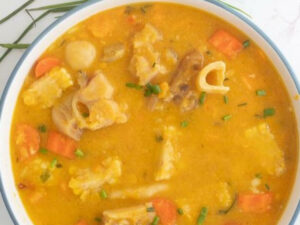
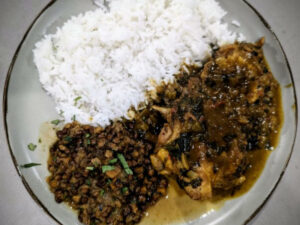
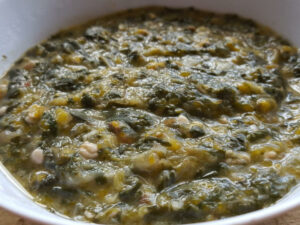
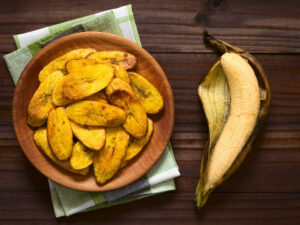
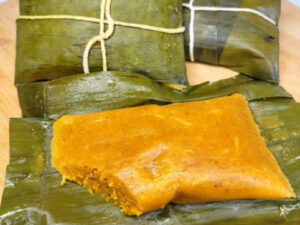
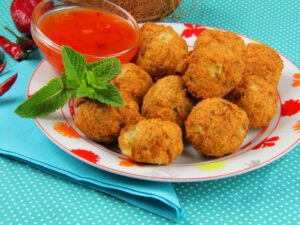
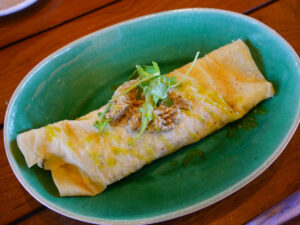

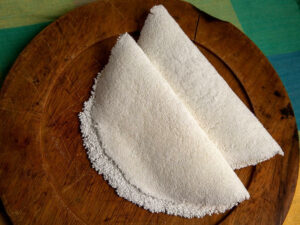
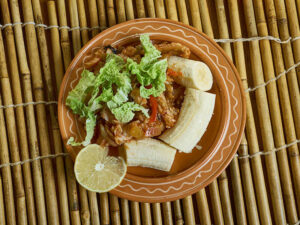
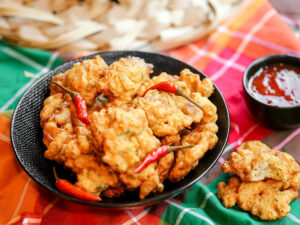
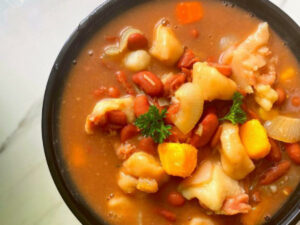
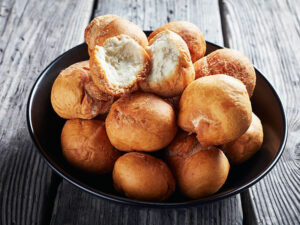
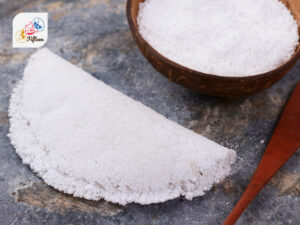
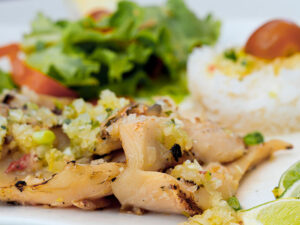
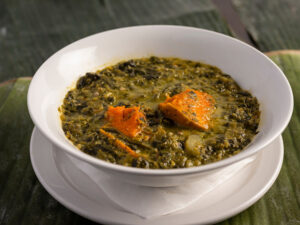
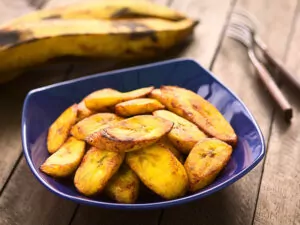
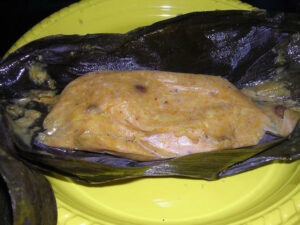

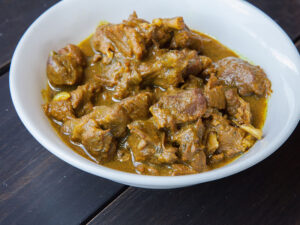
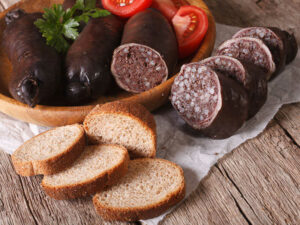
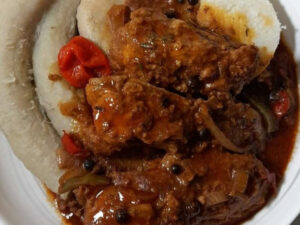
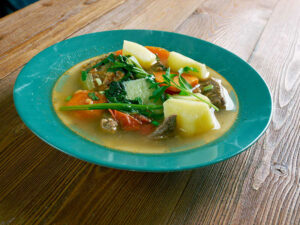
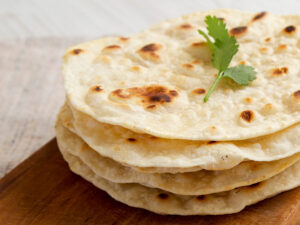
Jamie Scott
Editor in Chief, Senior Content Writer
Expertise
Home Cooking, Meal Planning, Recipe Development, Baking and Pastry, Food Editor, Cooking-video Maker, Western Food Evaluation Expert
Education
Le Cordon Bleu College of Culinary Arts
Local Community College, New York, NY
Jamie Scott is a skilled culinary expert and content creator specializing in Western cuisine. With over 15 years in the culinary field and formal training from Le Cordon Bleu, Paris, Jamie deeply understands how to blend nutrition with delicious flavors. His passion for cooking matches his commitment to making healthy eating accessible and enjoyable.
On Fifteen.net, Jamie brings a fresh perspective to classic dishes and beverages, offering readers insightful recipes, cooking tips, and a fresh view on meal planning that emphasizes taste, health, and simplicity.